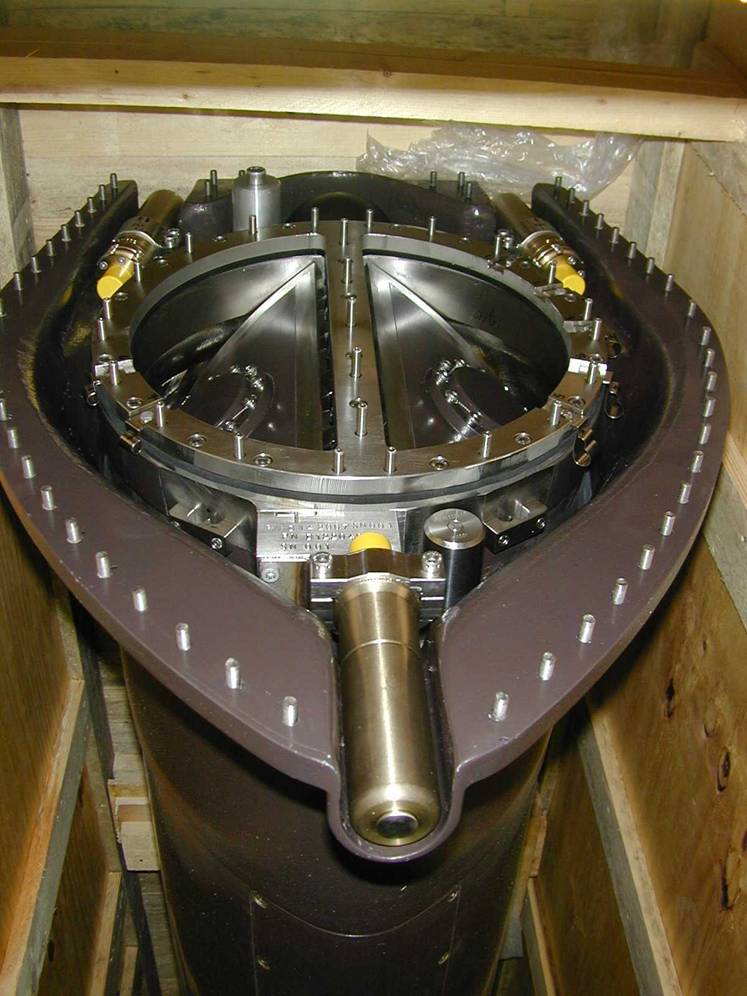 The Italian SNORKEL
The Italian SNORKEL  |
The invention of the snorkel is usually ascribed to the Germans, who first
used it in wartime, in 1943. Most informed people attribute its origin to
the Dutch, who installed it on the “O”-class boats in the late
thirties.
Of course, undoubtedly Germans have the “historical” paternity
of it, as well as the discovery of America is properly ascribed to Columbus
and not to the Vikings, even though they preceded him.
But, really, at least chronologically the snorkel is an Italian invention.
It was, in fact, the Major (Naval Engineer Corp) Pericle FERRETTI
who carried out first studies and experiments, in the early twenties, at the
Navy Yard in Taranto, where he was Head of the Submarines Department.
At the beginning, his idea was aimed just to make faster the submarine immersion:
if the boat, running in surface on diesels, is already ballasted and trimmed
for dive, but kept in “forced surfacing” – as he called
this status of partial submersion – by the hydroplanes, the diving operations
will be reduced only to “secure engines” and “planes to
dive”.
For running in such a way, engines air supply would be caught through the
existing battery ventilation intakes and exhaust gases would be discharged
underwater, boosted by hydraulic ejectors. The initial experiments were encouraging.
The gas discharge system, real serious problem, was subject of an accurate
study, published in 1922 on the Navy’s “NOTE DI INGEGNERIA NAVALE”
(Naval Engineering Notes) and illustrated later, in 1927, in some lectures
given (and, then, published too) by FERRETTI at the “Istituto di Guerra
Marittima” (Maritime War Institute). This plant, anyway, was never carried
out.
In fact, in the years between ’21 and ’25, FERRETTI proceeded
in projecting and building a real snorkel plant, with an apposite intake tube
to be placed on the conning tower. Air intake and gas exhaust were equipped
with ingenious “dynamic valves”, rotating when open, able to avoid
water flooding by centrifugal action.
This prototype, built at Taranto Yard, was installed on the submarine “H3”
(a “Holland” boat purchased in Canada during the 1st WW) in Naples
by the local Navy Yard, where FERRETTI in the meantime had been transferred.
On November 1925 the plant was tested, during apposite sea trials, by a special
board which reported the results had been “more than satisfactory”.
Only drawback: the increased visibility of the boat, due to the wave caused
by the intake mast and the white trail produced by the exhaust gases. Anyway,
the same inconvenience will be reported, some years later, by Dutch and, partly,
it persists still now.
For his invention, on January 20, 1926, FERRETTI got the “BREVETTO INDUSTRIALE”
(Design Patent) n. 244375 and some Navy’s awards.
Later, on April 13, 1926, during naval manoeuvres in the waters of Tripoli
(Libya), the plant was shown to Mussolini.

(1926 - Benito Mussolini on board of "H3" Submarine,
in Tripoli)
In the early thirties, in view of new submarine constructions, FERRETTI -
who, in the meantime, had left the Navy and become teacher at Naples University
– was asked to update his snorkel project, which assumed a new configuration
and was renamed “Apparecchio ML” (Device ML). Mark “ML”
has no technical meaning: those are just the initials of Maria Luisa, the
name of Mrs. Ferretti, whom he wanted to pay homage.
So, in 1934 the Navy decided to install the “Apparecchio ML” on
the submarine of new “SIRENA” class, some of them under construction
at C.R.D.A. shipyard, in Monfalcone (north Adriatic Sea). C.R.D.A. built and
tested ashore some of the devices and started to fit them up on board. But,
in 1937, the SUBMARINE COMMAND withdrew the order and even the plants already
installed were removed.
Even though such a sudden change looks rather odd, the decision was not totally
unreasonable: after all, according the tactical doctrine of submarine warfare
in that time, the boats didn’t need strictly a snorkel plant, which,
on the other hand, was a dangerous complication. Even the Admiralty removed
the snorkel from the Dutch boats repaired to England; and Germans too, from
the captured boats. Only the radar advent will impose the snorkel.

( "H" Class Submarine)
This is, in short, the Italian snorkel story.
There are no proofs of contacts between Italians and Dutch during the snorkel
achievement process. Very likely, they operated independently, not knowing
each other.
Instead, it seems that Germans had some knowledge about the Italian carrying
out, since they searched for FERRETTI after the Armistice (September 8, 1943),
but he was able to escape their hunt.

(a modern italian Snorkel head - made by Riva Calzoni)